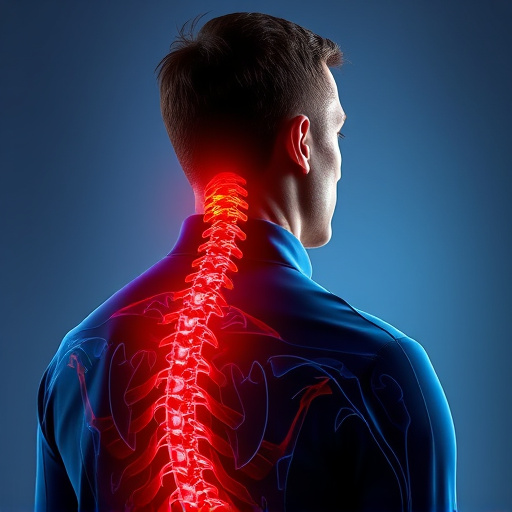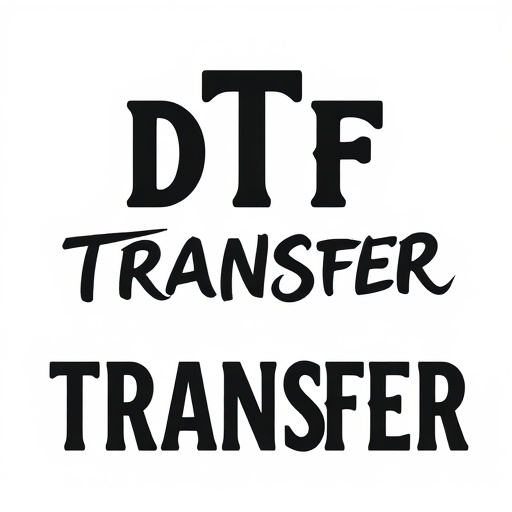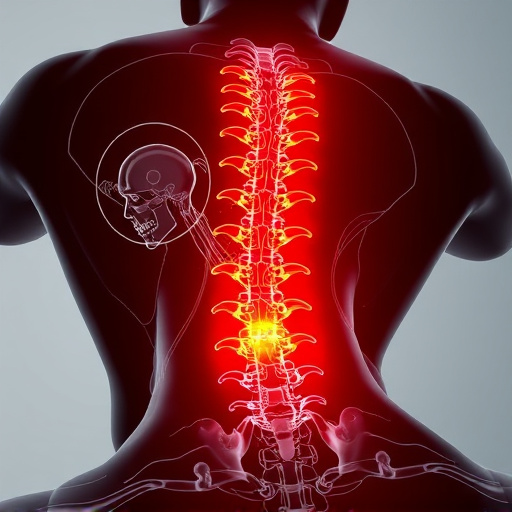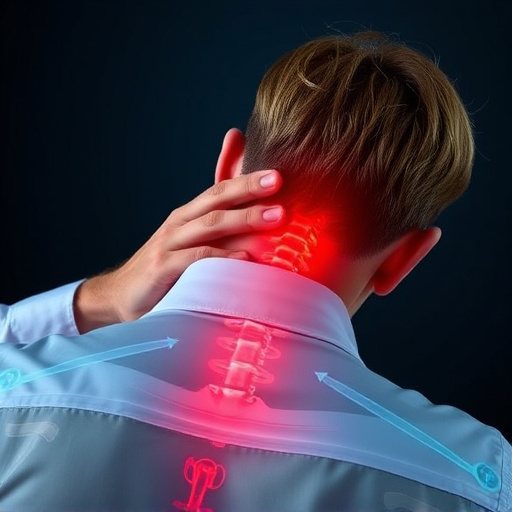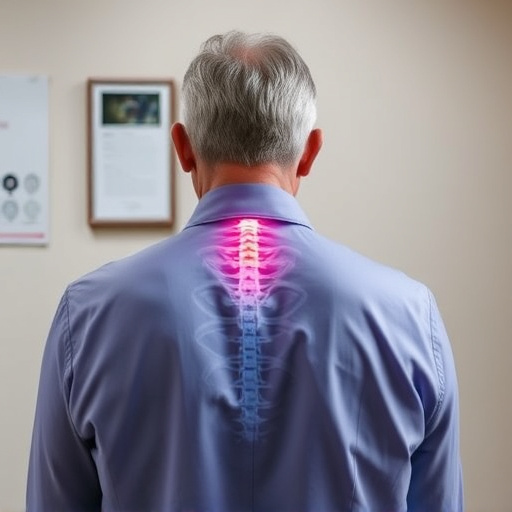Neck and back pain, caused by muscular strain, poor posture, and various triggers, can be managed through lifestyle changes, non-pharmacological techniques, and pharmaceutical interventions. Exercise, good posture, stress reduction, and mindfulness help in chronic pain relief. Physical therapy, chiropractic care, acupuncture, and alternative therapies offer effective solutions. Building a support network and seeking professional help significantly aids long-term management of neck and back pain, emphasizing holistic approaches for improved quality of life.
Struggling with persistent neck and back pain? It’s time to delve into long-term solutions for effective management. This comprehensive guide explores various aspects of alleviating chronic pain, from understanding its root causes and triggers to discovering a range of treatment options. Discover lifestyle modifications, non-pharmacological techniques, pharmaceutical choices, alternative therapies, and the vital role of mental health support in achieving lasting neck and back pain relief.
- Understanding Neck and Back Pain: Causes and Common Triggers
- Lifestyle Modifications for Long-term Relief
- Non-Pharmacological Pain Management Techniques
- Exploring Pharmaceutical Options: Medication for Chronic Neck and Back Pain
- Alternative Therapies and Their Efficacy in Pain Management
- Building a Supportive Network: Mental Health and Pain Relief
Understanding Neck and Back Pain: Causes and Common Triggers

Neck and back pain is a prevalent issue that can significantly impact daily life and overall well-being. Understanding the causes and triggers behind these persistent aches is crucial for implementing effective long-term neck and back pain relief strategies. Muscular strain, poor posture, and sudden movements are common culprits, leading to spasms and inflammation in the affected areas. Stress and anxiety also play a significant role, as tense muscles can manifest in the neck and upper back, causing chronic pain.
Various factors can trigger or exacerbate this condition, including repetitive tasks, prolonged sitting or standing, improper lifting techniques, and even sleep positions. Environmental factors like poor ergonomics at work or home and inadequate support from furniture can also contribute to persistent discomfort. Identifying these triggers is essential for developing a tailored plan that addresses the root causes of neck and back pain, leading to lasting relief and improved mobility.
Lifestyle Modifications for Long-term Relief

Many people suffering from chronic neck and back pain find significant relief through lifestyle modifications. Incorporating regular exercise tailored to strengthen core muscles and improve flexibility can be highly effective in managing pain over time. Activities like swimming, yoga, and walking can help reduce inflammation, enhance joint mobility, and promote overall well-being.
Additionally, adopting good posture while sitting, standing, and sleeping is crucial. Maintaining a healthy weight through balanced nutrition also takes pressure off the spine, leading to reduced neck and back pain. Stress management techniques like meditation or deep breathing exercises can also play a surprising role in alleviating chronic pain by reducing muscle tension and promoting relaxation.
Non-Pharmacological Pain Management Techniques
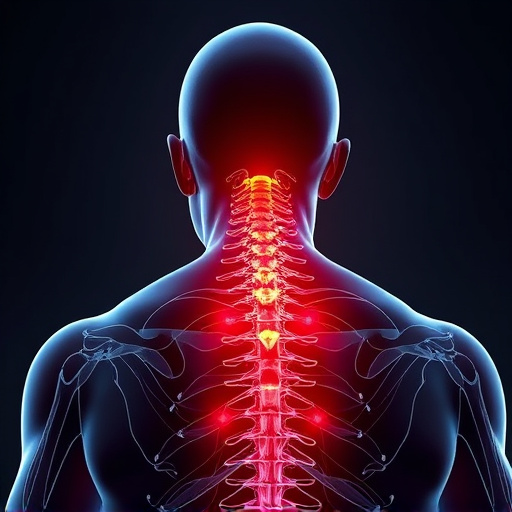
Non-Pharmacological Pain Management Techniques offer effective solutions for both neck and back pain relief, providing an alternative approach to reduce discomfort and improve overall well-being. These methods focus on addressing the root causes of pain rather than simply masking symptoms. Techniques such as physical therapy, chiropractic care, acupuncture, and mindfulness practices have gained recognition for their ability to provide lasting results.
Physical therapy involves specialized exercises and stretching techniques tailored to strengthen muscles supporting the spine, improve flexibility, and enhance posture, which can be particularly beneficial for chronic neck and back pain. Chiropractic care manipulates the spinal column to restore mobility and reduce nerve irritation, offering a natural way to manage pain. Acupuncture, an ancient practice, stimulates specific points in the body to release endorphins, the body’s natural painkillers, providing a safe and effective method for both short-term and long-term neck and back pain relief. Mindfulness practices, such as meditation and deep breathing exercises, teach individuals to recognize and manage pain responses, promoting mental resilience and reducing reliance on medication.
Exploring Pharmaceutical Options: Medication for Chronic Neck and Back Pain
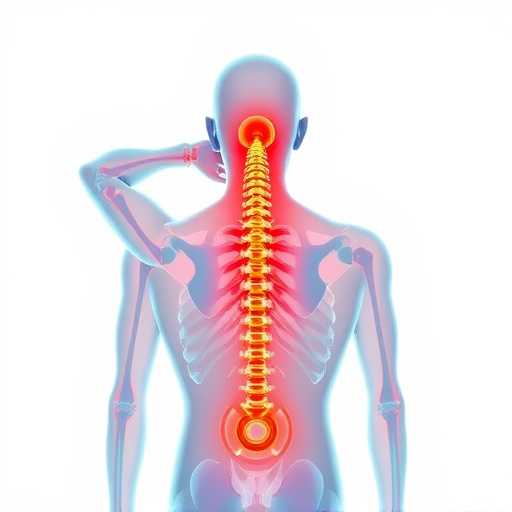
Chronic neck and back pain can significantly impact an individual’s quality of life, but exploring pharmaceutical options offers hope for effective long-term pain management. Nonsteroidal anti-inflammatory drugs (NSAIDs) like ibuprofen or naproxen are often the first line of defense to alleviate mild to moderate pain. These medications work by reducing inflammation and blocking certain enzymes responsible for producing pain signals.
For more severe cases, prescription medications such as muscle relaxants, antidepressants, or specific nerve blocks can be considered. Muscle relaxants help ease tension in the neck and back muscles, while antidepressants can be surprisingly effective in managing chronic pain by altering brain chemistry and reducing pain perception. Nerve blocks are temporary solutions that target specific areas of the body to provide instant relief, offering insights into the sources of pain and guiding further treatment plans.
Alternative Therapies and Their Efficacy in Pain Management
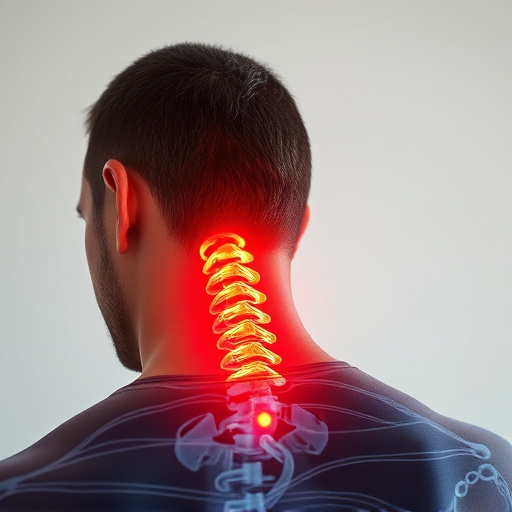
In addition to conventional medical treatments, alternative therapies have gained recognition for their effectiveness in managing long-term neck and back pain. Techniques such as acupuncture, chiropractic care, and massage therapy have shown promising results in alleviating pain and improving mobility. Acupuncture, for instance, involves inserting thin needles at specific points to stimulate the body’s natural healing response, offering relief from chronic pain conditions like fibromyalgia. Chiropractic care focuses on adjusting the spine and joint manipulation to restore balance and reduce pain signals to the brain.
Massage therapy is another popular choice, as it relaxes muscles, improves circulation, and reduces tension in the body. Studies suggest that regular massage sessions can significantly decrease neck and back pain intensity, making it an accessible and non-invasive option for many individuals seeking long-term pain relief. These alternative approaches often complement traditional treatments, providing a holistic approach to managing chronic pain conditions effectively.
Building a Supportive Network: Mental Health and Pain Relief

Living with chronic neck and back pain can be isolating, but building a supportive network is essential for effective long-term pain management. Mental health plays a crucial role in pain perception and relief. Connecting with friends, family, or support groups can provide emotional support, reduce stress, and offer valuable coping strategies. Sharing experiences and learning from others facing similar challenges can foster a sense of community and belonging, enhancing overall well-being.
Professional help is also an integral part of this network. Therapists and counselors skilled in pain management can teach mindfulness techniques, cognitive behavioral therapy (CBT), and relaxation methods to better manage both physical and mental aspects of pain. Integrating these practices into daily routines can significantly improve neck and back pain relief, promoting a healthier and more balanced lifestyle.



